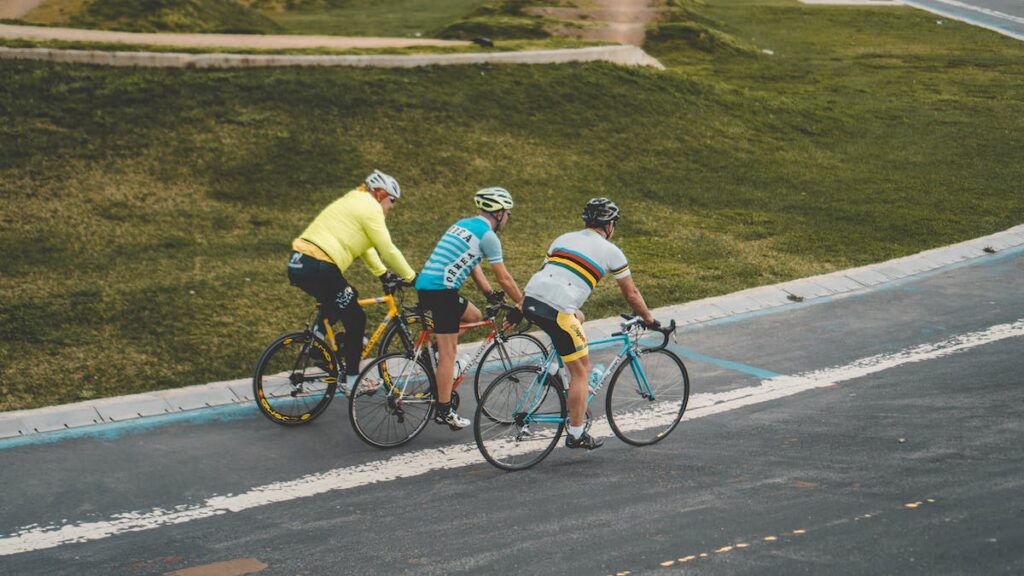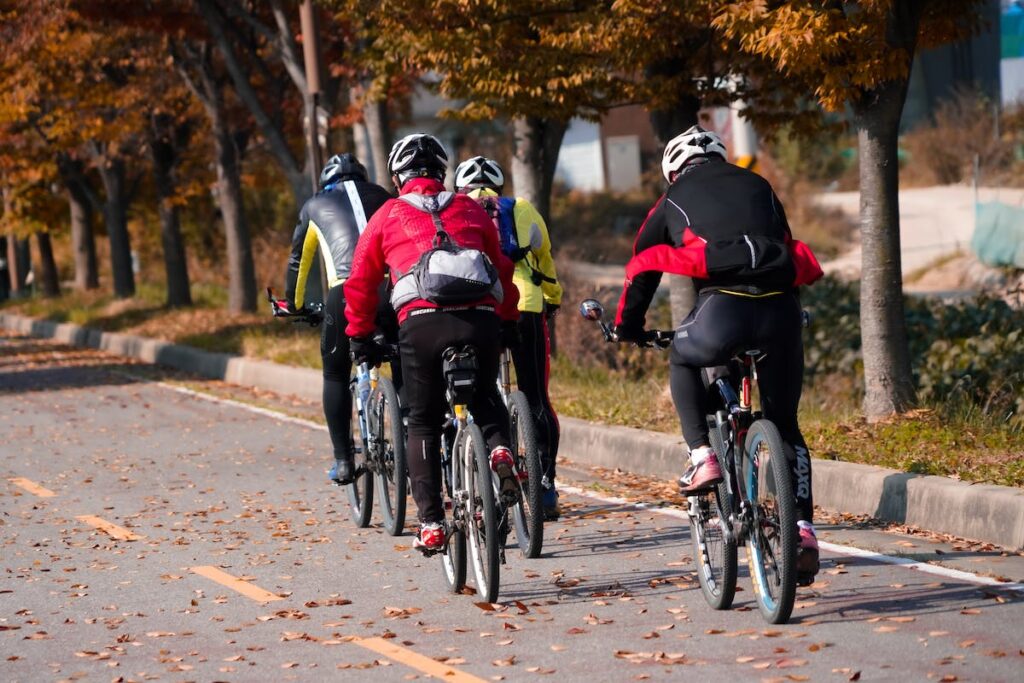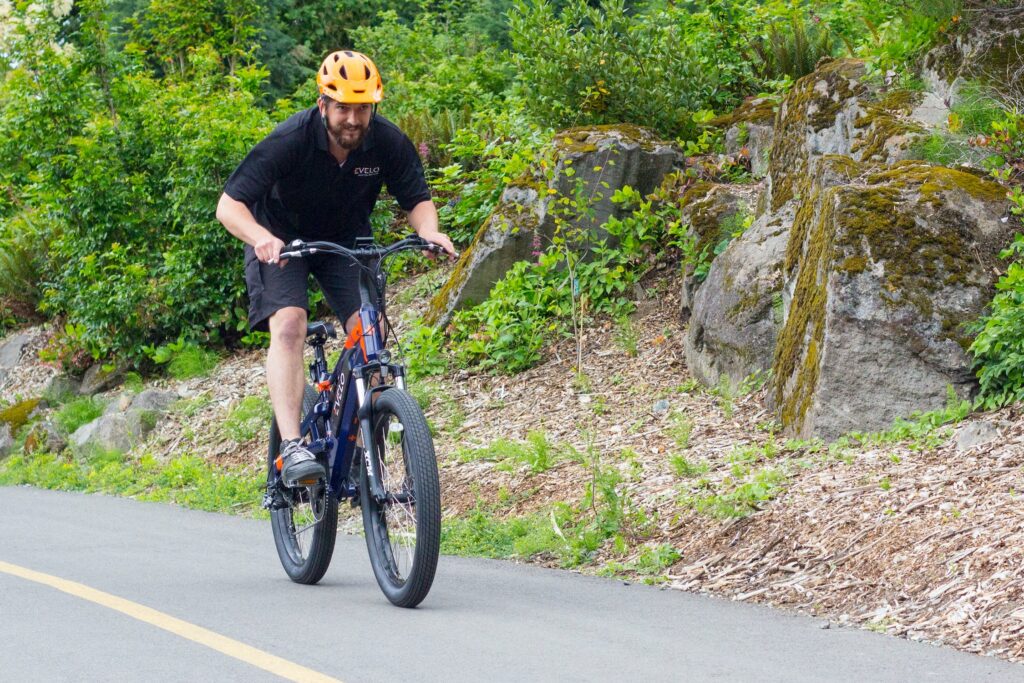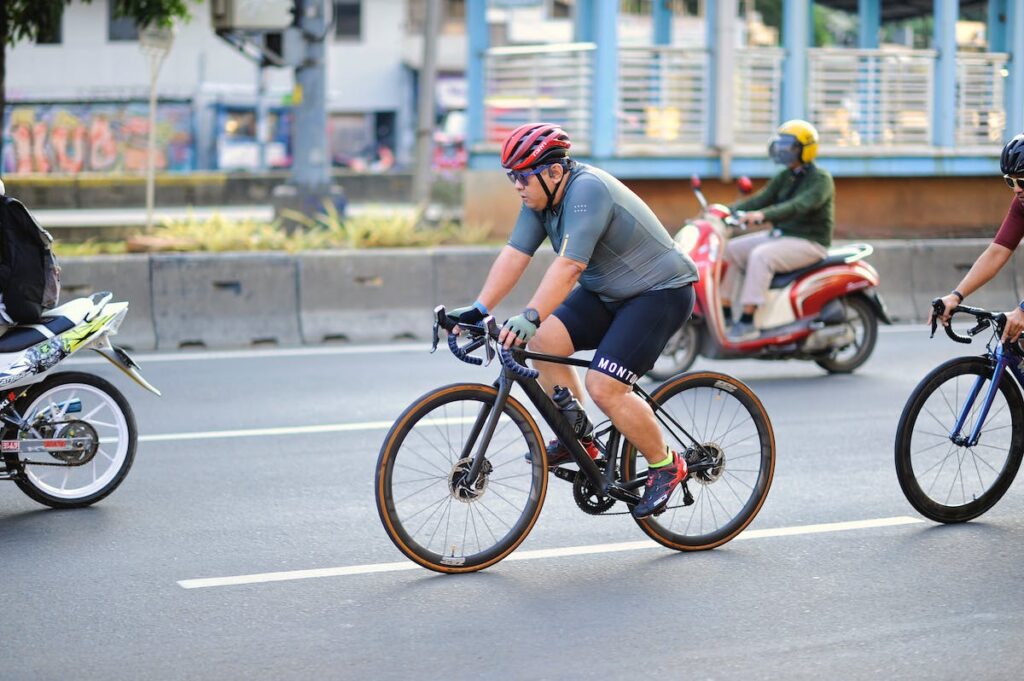A gravel bike has a drop handlebar and enables you to travel over a variety of terrain and great distances. Gravel bikes often have wider (35 mm and up), frequently knobby tires to better grip on bumpy ground, a more comfortable, relaxed design, and disc brakes for powerful stopping in a variety of weather situations. Whether you’re a fitness enthusiast, an adventure rider, or a participant in competitive or noncompetitive events, there is a gravel bike out there that is perfect for you.
Various aspects need to be taken into account when selecting the best gravel bike for your riding style.
We have carefully highlighted some essential factors to take into account so you can choose wisely:
1. Frame and Geometry:

Finding a frame material that fits your needs and price range is vital. While carbon fiber frames are lighter and more expensive, aluminum frames are typically more cost-effective. For those looking for a sturdy and comfortable ride, steel frames are another excellent choice. The geometry of the bike, including the head tube angle, stack height, and wheelbase, should also be taken into account. Off-road riding benefits from aggressive geometry because it offers superior handling and control on challenging terrain. While providing a more comfortable and stable ride over longer distances, more relaxed geometry is ideal for long-distance and endurance riding.
2. Tire Clearance:

Make sure it has sufficient tire clearance to fit the tire width you choose. Compared to road bikes, gravel bikes often have wider tire clearances, allowing riders to use wider tires for improved traction and stability on unpaved surfaces. Wider tires can offer a smoother ride over longer distances by absorbing more of the shock from potholes and bumps. Make sure the bike can accommodate the tire width you desire by checking the tire clearance specs before selecting it. No matter where your activities take you, doing this will assist to guarantee that you have a safe and comfortable ride.
3. Tire Size and Tread:

Consider the type of terrain you’ll be riding on. Different tire widths and tread designs are needed for various terrains. For instance, bigger tires are typically preferable if you plan to ride on loose surfaces like gravel or mud since they offer more stability and traction on inclines. More aggressive tread patterns on tires can also aid in enhancing traction in slick situations. However, since they offer less rolling resistance and let you ride more effectively, narrower tires with a smoother tread pattern are typically preferable if you’ll be riding on smooth roads or bike paths.
4. Gearing:

It’s necessary to think about the variety of gear you’ll require depending on the terrain you intend to ride. A broader cassette range or a 1x drivetrain may be advantageous because steeper climbs and rougher terrain may call for lower gears. In order to make steep climbs more doable, a larger cassette range enables more gears at the lower end of the spectrum. The proper gear is easier to find for the terrain you’re riding on with a 1x drivetrain because it eliminates the need for a front derailleur and streamline shifting.
5. Brakes:

Choose between hydraulic or mechanical disc brakes. Both braking types work well to stop your bike, but hydraulic disc brakes have more modulation and stopping force, especially when it’s muddy or rainy outside. This is so that hydraulic brakes, which offer more reliable and accurate braking performance, can transfer force from the brake lever to the brake caliper using fluid. Mechanical disc brakes, on the other hand, employ a cable to transfer force, which is susceptible to cable stretch and other variables. Hydraulic disc brakes offer higher performance and are typically favored by more experienced riders, even if mechanical disc brakes are typically less expensive and simpler to maintain.
6. Suspension:

Determine whether a rigid fork will do in place of front suspension. By cushioning impacts from rocks and bumps, suspension can increase comfort and control on harsher terrains, which can assist to lessen fatigue and improve traction. On smoother ground or during lengthy rides, suspension forks might be a disadvantage because they can increase weight and decrease performance. On smoother conditions or during longer rides, rigid forks might make the bicycle advantageous because they are typically lighter and more efficient.
7. Accessories and Mounting Points:

For longer journeys or bike-packing, search for bikes with enough mounting places to attach racks, fenders, water bottle cages, and other equipment. The frame and fork of the bike have mounting points, which are places where extras can be attached. For instance, mounting points can be used to attach fenders to shield you and your bike from mud and water, racks to carry panniers for bike packing bags, and water bottle cages to stay hydrated on extended journeys.
8. Fit and Comfort:

When selecting the bike size and frame geometry, take into account your body proportions and flexibility. The appropriate size and frame geometry can assist ensure that you’re comfortable and productive on your bike. Different bikes are intended for different riding patterns and body types. For instance, mountain bikes often have a more upright geometry that puts you in a more comfortable position for challenging terrain, but road bikes typically have a more aggressive geometry that puts you in a more aerodynamic position. Additionally, the weight, rigidity, and ride quality of the bike can be impacted by the frame’s composition, which can range from carbon fiber to aluminum to steel.
9. Budget:

pick a bike that delivers the greatest components and features for your price and within that range. Depending on the components, frame material, and other features, the cost of a gravel bike can range from a few hundred dollars to several thousand dollars.
It’s crucial to take both short-term and long-term costs into account when creating your budget. The bike’s initial cost as well as any necessary extras, including a helmet, pedals, and shoes, are considered short-term expenses. Long-term costs include ongoing expenses for maintenance and repairs as well as potential upgrades like a new drivetrain or wheelset.
FAQs:
How comfortable is a gravel bike?
Gravel bikes can be quite comfortable, especially when compared to road bikes. Many gravel bikes have more relaxed geometry, wider tires, and suspension elements that help absorb vibrations and bumps on rough terrain. These features can make for a smoother ride and reduce fatigue, which can help you ride longer and more comfortably.
Can gravel bikes go downhill?
Yes, gravel bikes can certainly go downhill. In fact, many gravel bikes are designed to handle a variety of terrain, including steep descents.
Which is faster; road bike or gravel bike?
In general, road bikes are faster than gravel bikes on smooth, paved roads. Road bikes are designed to be lightweight and aerodynamic, with narrow tires and aggressive geometry that allows for efficient pedaling and high speeds.
However, on rough or unpaved terrain, gravel bikes can be faster than road bikes.
Conclusion:
Remember that selecting the ideal gravel bike is a personal decision while making your selection. Understand that everyone has a unique riding style, set of preferences, and objectives; therefore, it’s critical to rank the criteria according to their importance to you.

